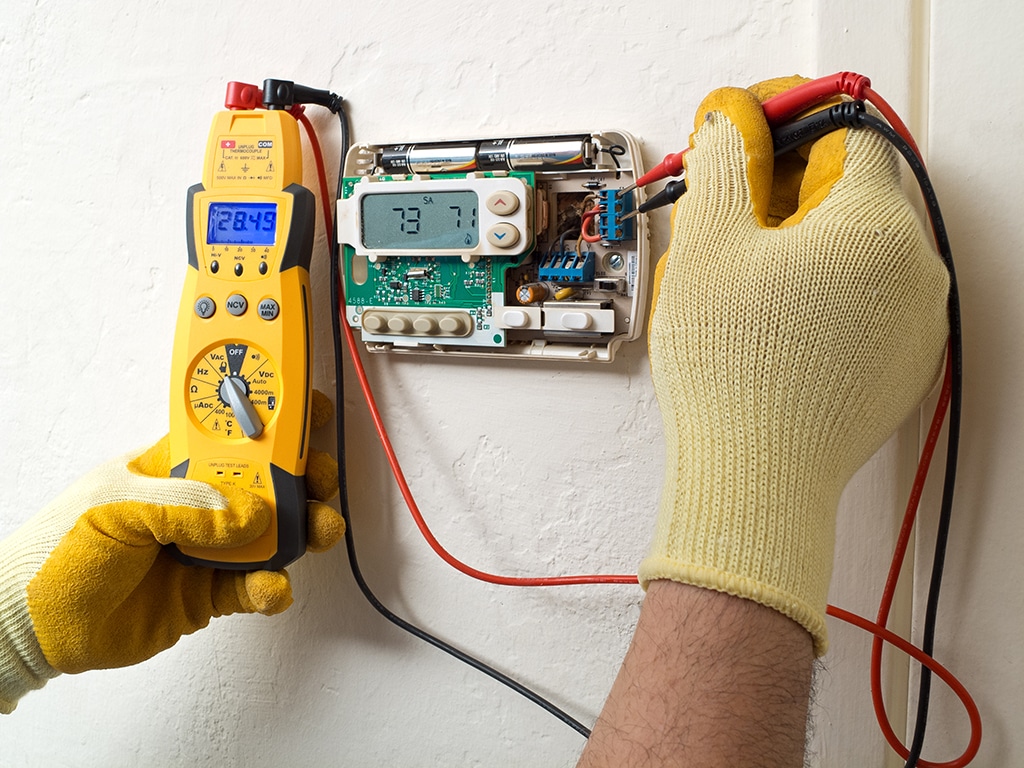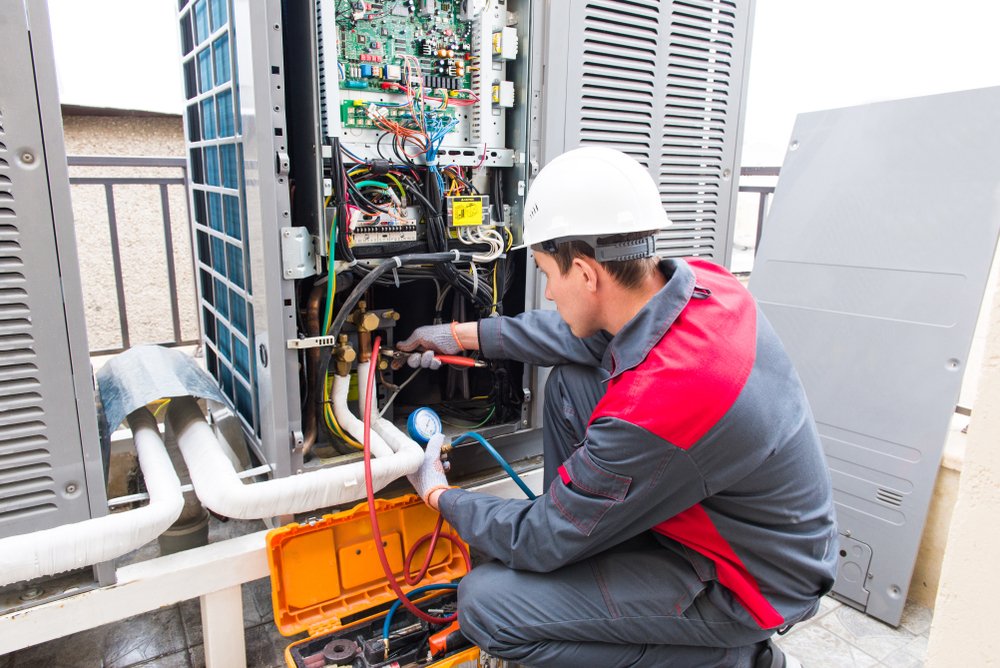Designing With Comfort in Mind: Integrating A/c in Design
When it concerns making building rooms, the old claiming 'form follows function' applies. But have you ever before considered how integrating cooling right into architecture can boost convenience and efficiency simultaneously?
The smooth fusion of cooling systems within the structure of a structure not just influences the residents' well-being yet likewise influences the overall sustainability of the structure. As you explore the elaborate connection in between design and air conditioning, a world of ingenious solutions and innovative modern technologies awaits your discovery.
Trick Takeaways
- Energy-efficient systems improve convenience and sustainability.
- Integrated air conditioning boosts interior air quality.
- Balancing looks and functionality ensures suitable style.
- Future trends focus on wise, lasting air conditioning services.
Relevance of Integrated A/c
When designing areas, integrating air conditioning is essential for making certain the very best comfort and functionality. Power effectiveness plays an important function in the style process, as it not only decreases functional expenses but likewise minimizes the ecological impact of the building. By including energy-efficient air conditioning systems, you can create a lasting and cost-effective service that benefits both the owners and the planet.
Additionally, interior air quality is an additional vital element to think about when creating with incorporated cooling. Appropriate ventilation and filtering systems assist keep a healthy indoor atmosphere by reducing toxins and allergens. This results in improved owner wellness and performance. When picking air conditioning systems, focus on those that use sophisticated purification modern technologies to boost the overall interior air top quality.
Factors Affecting Layout Choices
Incorporating air conditioning into building layouts needs mindful consideration of various factors that affect design decisions. When incorporating air conditioning systems, sustainability factors to consider are vital to reduce the building's environmental influence. User experience plays a significant function in establishing the effectiveness and fulfillment with the a/c system.
Power Efficiency: Sustainable design practices aim to reduce power intake, which not just profits the setting yet additionally minimizes functional prices for the building proprietor.
Indoor Air High Quality: Supplying a comfortable and healthy and balanced indoor setting improves the overall individual experience, advertising performance and well-being.
Appearances and Integration: Integrating cooling systems seamlessly into the building design guarantees that functionality doesn't jeopardize the visual allure of the room, boosting customer contentment and overall structure aesthetic appeals.
Efficient Cooling Techniques for Buildings
To maximize cooling efficiency in buildings, think about including easy style approaches together with a/c systems. Easy air conditioning techniques can substantially lower the requirement for mechanical cooling, leading to even more sustainable options for keeping comfortable indoor temperatures. Style functions such as shading tools, natural ventilation systems, and thermal mass can assist manage temperature levels without counting exclusively on energy-intensive a/c. By strategically placing windows to take full advantage of cross ventilation or making use of reflective roofing products to minimize solar warm gain, you can harness the power of nature to cool your building efficiently.
Along with passive approaches, implementing lasting options like eco-friendly roof coverings or living wall surfaces can further improve cooling down efficiency by giving insulation and lowering warmth absorption. These features not only aid in maintaining comfortable interior temperature levels yet additionally contribute to a greener atmosphere. By integrating easy cooling techniques with lasting services, you can develop an extra energy-efficient and environmentally friendly building style that focuses on both convenience and preservation.
Balancing Looks and Capability
Consider the harmonious integration of visual components with functional elements in your architectural layout to ensure a balanced and impactful result. When incorporating air conditioning systems into your structure style, striking a balance between aesthetic appeals and functionality is crucial to producing rooms that not only look excellent yet likewise give excellent comfort for passengers.
To attain this balance, keep the complying with points in mind:
Mix the System with the Surroundings: Ensure that the cooling devices or vents effortlessly incorporate with the general visual of the space, whether through hidden placement, attractive covers, or matching colors.
Focus On Individual Experience: Design the airflow and temperature level control systems in a manner that focuses on the comfort and wellness of the passengers. Think about elements such as air distribution, sound levels, and simplicity of usage to enhance the total user experience.
Integrate Sustainable Practices: Opt for energy-efficient air conditioning remedies that not only contribute to the visual appeal of the structure yet likewise advertise sustainability and minimize environmental impact.
Future Patterns in Architectural Cooling
As you visualize the future of building layout, staying abreast of arising air conditioning trends comes to be critical for improving both type and feature within your tasks.
The combination of clever technologies right into building cooling systems is set to change the method structures are cooled down. These systems use data and automation to maximize power use, supplying individualized comfort while minimizing ecological effect.
Sustainable services are likewise shaping the future of building air conditioning. From easy layout strategies that make best use of all-natural ventilation to innovative air conditioning products that lessen the requirement for traditional air conditioning, sustainability is at the leading edge of cooling advancements. Designers are progressively integrating environment-friendly roof coverings, shading components, and thermal mass into their styles to produce more energy-efficient air conditioning systems.
Regularly Asked Questions
How Does A/c Effect the Overall Sustainability and Energy Efficiency of a Structure Layout?
When you incorporate air conditioning right into building style, it impacts sustainability and energy performance. Energy usage can rise as a result of cooling usage, impacting structure effectiveness. This increased energy demand can have adverse environmental effects, lowering total sustainability.
To alleviate these effects, consider integrating energy-efficient a/c systems, correct insulation, and passive air conditioning strategies. Balancing comfort with energy efficiency is very important for creating sustainable building layouts.
Are There Any Kind Of Rules or Certifications That Architects Need to Think About When Integrating Cooling Into Their Styles?
When integrating a/c right into your layouts, it's important to take into consideration regulatory requirements like building codes and accreditation standards for energy performance. Meeting these guidelines assurances that your job straightens with market finest methods and ecological goals.

Familiarizing on your own with these regulations will assist you in developing sustainable styles that prioritize convenience while likewise lowering energy intake. Remain educated and compliant to supply projects that are both comfy and environmentally friendly.
Can the Positioning of Cooling Units Impact the General Convenience and Capability of a Room? mini split ac installation

When it comes to cooling units, placement matters a whole lot for your area's comfort and capability. Air flow is essential, so avoid blocking vents or placing systems in dilemmas.
Consider just how noise pollution can impact your atmosphere and go for a visually pleasing configuration that mixes perfectly with your spatial format.
Focus on where you position these systems to ensure optimum comfort and effectiveness throughout your area.
What Are Some Ingenious Technologies or Products That Can Be Made Use Of to Improve Cooling Equipments in Modern Style?
To enhance air conditioning systems in contemporary architecture, you can check out wise controls and lasting materials. Easy air conditioning techniques and utilizing thermal mass are cutting-edge methods to improve effectiveness and convenience.

How Can Architects Ensure That the Style of A/c Solutions Complements the Total Visual of a Building While Still Prioritizing Functionality and Convenience?
To assure the style of a/c systems matches a structure's aesthetic, prioritize visual combination and design harmony. Include energy-efficient technologies for capability. Balancing looks and capability improves passenger convenience.

Emphasize smooth assimilation of cooling elements right into the architectural layout. By focusing on both visual appeals and power effectiveness, engineers can produce a room that's visually appealing, comfortable, and eco-friendly.
Conclusion
Overall, when designing with convenience in mind, integrating air conditioning in design is vital. By considering elements such as efficient air conditioning methods, stabilizing aesthetic appeals and functionality, and staying ahead of future patterns, architects can produce areas that aren't just visually enticing but additionally comfortable for residents.
It is very important to focus on the well-being and convenience of those who'll be using the room, and integrated cooling plays a vital role in achieving this objective.